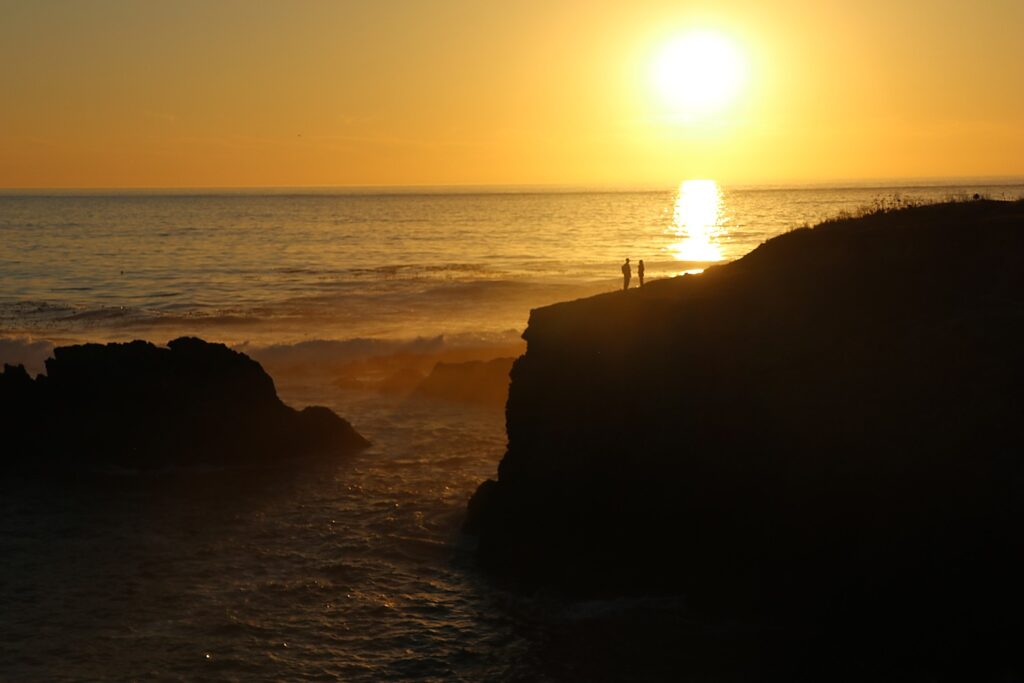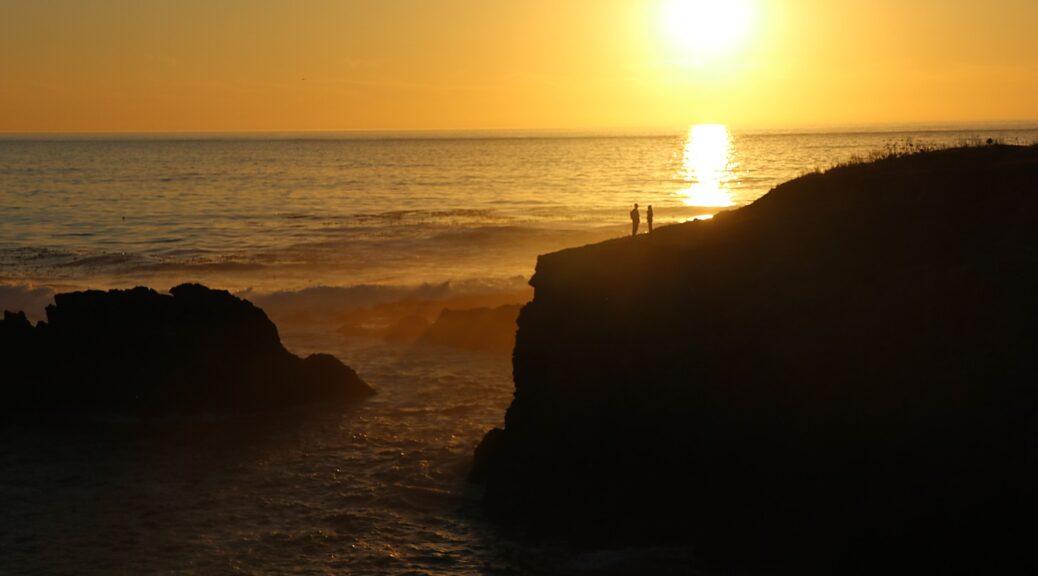
With his latest action to protect Atlantic and Pacific Coasts from offshore oil and gas drilling, President Biden has now conserved over 670 million acres of America’s lands and waters, more than any other president in history. This fact sheet was provided by the White House:
President Biden has taken action to protect the entire U.S. East coast, the eastern Gulf of Mexico, the Pacific off the coasts of Washington, Oregon, and California, and additional portions of the Northern Bering Sea in Alaska from future oil and natural gas leasing. In protecting more than 625 million acres of the U.S. ocean from offshore drilling, President Biden has determined that the environmental and economic risks and harms that would result from drilling in these areas outweigh their limited fossil fuel resource potential. With these withdrawals, President Biden is protecting coastal communities, marine ecosystems, and local economies – including fishing, recreation, and tourism – from oil spills and other impacts of offshore drilling.
Nearly 40 percent of Americans live in coastal counties that rely on a healthy ocean to thrive. With today’s action, President Biden is ensuring that these regions can remain healthy and safe from the risk of oil spills resulting from development that would do little, if anything, to meet the nation’s energy needs.
Nearly 400 municipalities and over 2,300 elected local, state, Tribal, and federal officials across the Atlantic, Pacific, and Gulf coasts have formally opposed the expansion of offshore drilling in these areas in view of its severe environmental, health, and economic threats. Nearly every Governor along the East and West Coasts – Republicans and Democrats alike – has expressed concerns about expanded oil and gas drilling off their coastlines. In Alaska, the new Northern Bering Sea protections are consistent with a long-standing request from more than 70 coastal Tribes based on the need to help sustain a vital and threatened ocean area, and the natural resources it contains that Indigenous communities have stewarded and relied on for subsistence since time immemorial.
With this action, President Biden has conserved more lands and waters than any other U.S. president in history.
President Biden stated:
“I am taking action to protect the East and West coasts, the eastern Gulf of Mexico, and Alaska’s Northern Bering Sea from oil and natural gas drilling and the harm it can cause. My decision reflects what coastal communities, businesses, and beachgoers have known for a long time: that drilling off these coasts could cause irreversible damage to places we hold dear and is unnecessary to meet our nation’s energy needs. It is not worth the risks. As the climate crisis continues to threaten communities across the country and we are transitioning to a clean energy economy, now is the time to protect these coasts for our children and grandchildren.
“From California to Florida, Republican and Democratic Governors, Members of Congress, and coastal communities alike have worked and called for greater protection of our ocean and coastlines from harms that offshore oil and natural gas drilling can bring. In Alaska, dozens of Tribes have fought to protect the Northern Bering Sea, a vital ocean ecosystem that supports their traditional ways of life. Vice President Harris and I have listened. In balancing the many uses and benefits of America’s ocean, it is clear to me that the relatively minimal fossil fuel potential in the areas I am withdrawing do not justify the environmental, public health, and economic risks that would come from new leasing and drilling.
“The Deepwater Horizon oil spill, a man-made catastrophe that took the lives of eleven people and spilled millions of barrels of oil into the waters of the Gulf of Mexico, is a solemn reminder of the costs and risks of offshore drilling to the health and resilience of our coasts and fisheries and underscores the importance of the legal protections I am putting in place today. It is also one of the reasons why on my watch we have strengthened offshore safety standards for workers and communities on the front lines of existing operations nationwide, and rapidly accelerated the development of safer and cleaner energy sources, including the approval of eleven offshore wind projects.
“From Day One, I have delivered on the most ambitious climate and conservation agenda in our country’s history. And over the last four years, I have conserved more than 670 million acres of America’s lands and waters, more than any other president in history. Our country’s remarkable conservation and restoration progress has been locally led by Tribes, farmers and ranchers, fishermen, small businesses, and outdoor recreation enthusiasts across the country. Together, our “America the Beautiful” initiative put the United States on track to meet my ambitious goal to conserve at least 30 percent of our Nation’s lands and waters by 2030.
“We do not need to choose between protecting the environment and growing our economy, or between keeping our ocean healthy, our coastlines resilient, and the food they produce secure and keeping energy prices low. Those are false choices. Protecting America’s coasts and ocean is the right thing to do, and will help communities and the economy to flourish for generations to come.”
FACT SHEET: President Biden Protects Atlantic and Pacific Coasts from Offshore Oil and Gas Drilling
Protecting the Atlantic Ocean, Pacific Ocean, Eastern Gulf of Mexico and Northern Bering Sea from Offshore Drilling
Using his authority under Section 12(a) of the Outer Continental Shelf Lands Act, President Biden is issuing two Presidential Memoranda to protect all U.S. Outer Continental Shelf areas off the East and West coasts, the eastern Gulf of Mexico, and additional portions of the Northern Bering Sea in Alaska from future oil and natural gas leasing. The withdrawals have no expiration date, and prohibit all future oil and natural gas leasing in the areas withdrawn. President Biden first used this authority in January of 2021 when he restored protections for part of the Northern Bering Sea, and again in March 2023 to withdraw 2.8 million acres of the Beaufort Sea from future oil and gas leasing, which completed protections for the entire U.S. Arctic Ocean.
This action will safeguard three distinct ocean and coastal regions:
- The entire eastern U.S. Atlantic coast and the Eastern Gulf of Mexico. President Biden is protecting approximately 334 million acres of the Atlantic Outer Continental Shelf (OCS) from Canada to the southern tip of Florida, and the Eastern Gulf of Mexico. There are currently no active oil and natural gas leases in Federal waters off the eastern Atlantic coast. The southern section of this withdrawal matches a previous Congressional withdrawal enacted by the Gulf of Mexico Energy Security Act of 2006, and a subsequent time-limited 12(a) withdrawal issued by the previous administration that would have expired in 2032 without today’s protections. Today’s withdrawal builds on those prior withdrawals and helps safeguard the multi-billion-dollar fishing and tourism economies in these states.
- The Pacific Coast along California, Oregon, and Washington. This withdrawal protects nearly 250 million acres of Federal waters off the West Coast of the mainland U.S. that are prime habitat for seals, sea lions, whales, fish, and countless seabirds. The State of California has had a moratorium on issuing new leases in its state waters since 1969, and the last Federal lease sale in the area being withdrawn was offshore of Southern California in 1984. The Governors of these states have called for full protection of their coasts for decades.
- The remaining portion of the Northern Bering Sea Climate Resilience Area in Alaska. This withdrawal will protect 44 million acres of the Northern Bering Sea in far northwest Alaska that is home to fish, sea birds, and other wildlife and where there are no existing oil and gas leases. The Northern Bering Sea Climate Resilience Area was established in 2016 and includes one of the largest marine mammal migrations in the world – beluga and bowhead whales, walruses, and seals travel the funnel of the Bering Strait each year to feed and breed in the Arctic. This is an area where oil and gas development would pose severe dangers to coastal communities, and where the health of these waters is critically important to food security and to the culture of more than 70 coastal Tribes, including the Yup’ik, Cup’ik, and Inupiaq people who have relied on these resources for millennia. The Alaskan Congressional delegation has opposed previous proposals to allow oil and gas leasing and drilling in the area.
Building on a Historic Ocean Conservation and Climate Legacy
These actions build upon the Biden-Harris Administration’s ambitious climate agenda and unprecedented commitment to protect America’s natural wonders now and for future generations. The withdrawals advance two important Biden-Harris Administration priorities: honoring and protecting areas of significance to Tribal Nations and Indigenous peoples as well as States and other stakeholders; and helping to ensure our oceans and coasts are resilient to the threats of climate change and nature loss.
The Biden-Harris Administration’s climate and conservation record includes creating three new national marine sanctuaries and a new national estuarine research reserve, including the Chumash Heritage National Marine Sanctuary off the coast of Central California; advancing designations for four additional sanctuaries; safeguarding Bristol Bay salmon fisheries; approving more than 19 gigawatts of offshore wind projects, enough to power more than 6 million homes; investing $2.6 billion in coastal communities; and releasing the first-ever U. S. Ocean Climate Action Plan.
With today’s withdrawals, President Biden has now conserved more than 670 million acres of U.S. lands, waters, and ocean – more than any president in history. This includes establishing or expanding ten national monuments and restoring protections for three more; creating six new national wildlife refuges; protecting the Boundary Waters of Minnesota, the nation’s most visited wilderness area; and withdrawing Chaco Canyon in New Mexico, Pactola Reservoir in South Dakota, and Thompson Divide in Colorado from further mineral, oil, and gas leasing.
These actions are helping advance the President’s America the Beautiful initiative, which is supporting locally led conservation efforts with a goal to protect, conserve, and restore at least 30 percent of U.S. lands and waters by 2030.

